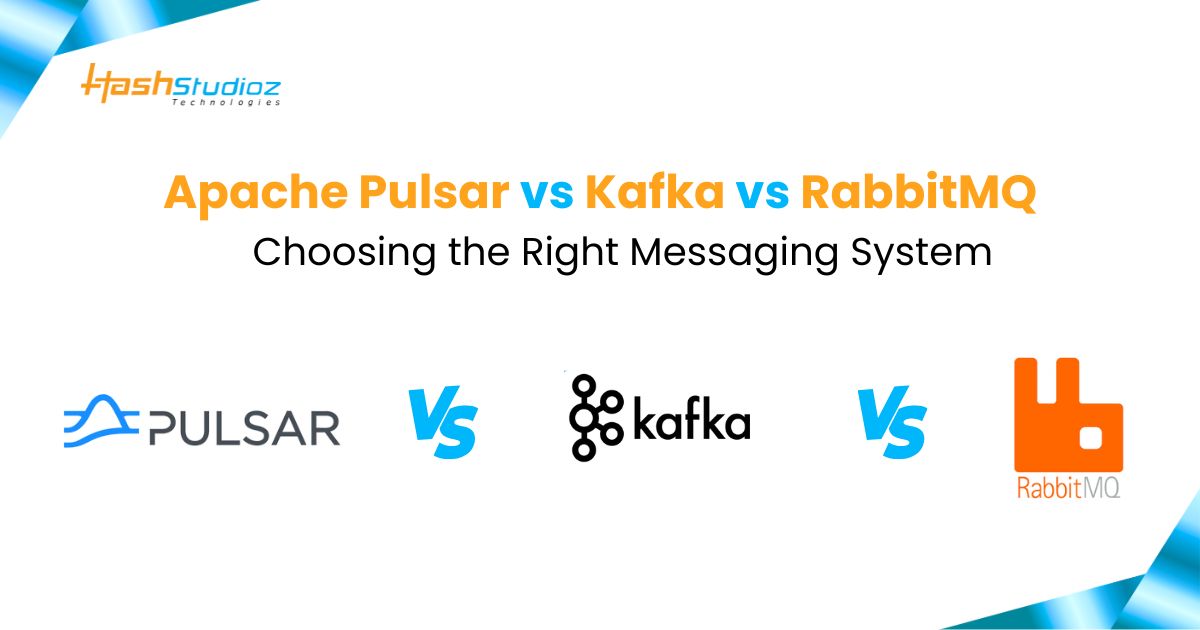In the world of modern software architecture, messaging systems play a key role in decoupling services, handling high loads, and enabling real-time communication. Three widely used tools in this space are Apache Kafka, Apache Pulsar, and RabbitMQ. While they may seem similar, each one offers distinct strengths and fits different use cases.
Let’s break it down in a simple and practical way.
Table of Contents
Apache Kafka – The Streaming Powerhouse
Kafka is a distributed messaging platform designed for real-time data pipelines and streaming applications.
Pros:
- Designed for high-throughput and low-latency.
- Perfect for event sourcing and log replay.
- Strong support across the ecosystem (Flink, Spark, ksqlDB, etc.).
- Maintains message order within a partition.
Cons:
- Lacks native multi-tenancy.
- Scaling across regions requires manual effort.
- Storage and compute are tightly coupled.
Apache Pulsar – The Flexible Next-Gen Platform
Pulsar is a cloud-native messaging system that supports both streaming and message queuing.
Pros:
- Separates storage and messaging, making it easy to scale.
- Multi-tenant by design – ideal for large organizations.
- Built-in geo-replication.
- Offers tiered storage for long-term data retention.
- Can act as Kafka + RabbitMQ in one tool.
Cons:
- Slightly more complex setup (uses Apache BookKeeper for storage).
- Fewer third-party integrations compared to Kafka (but growing fast).
RabbitMQ – The Reliable Message Queue
RabbitMQ is a traditional message broker, best suited for reliable delivery and message routing.
Pros:
- Mature and widely used.
- Supports multiple protocols like AMQP, MQTT, STOMP.
- Offers advanced routing patterns via exchanges.
- Easy to deploy and manage.
Cons:
- Not built for high-throughput streaming.
- No built-in message replay feature.
- Scaling horizontally can be challenging.
Side-by-Side Comparison
| Feature | Apache Pulsar | Apache Kafka | RabbitMQ |
| Architecture | Compute + Storage Split | Log-Based | Broker-Based |
| Use Case | Queuing + Streaming | Event Streaming | Traditional Queuing |
| Message Replay | Yes | Yes | No |
| Multi-Tenancy | Built-in | Manual | Limited |
| Geo-Replication | Out-of-the-box | Manual Setup | Limited Support |
| Ordering Guarantee | Per Key | Per Partition | Per Queue |
| Data Retention | Tiered (Infinite) | Configurable | Limited |
| Ease of Setup | Moderate | Moderate | Simple |
When to Use Apache Pulsar
Pulsar excels in complex, scalable systems needing both streaming and queuing.
1. Multi-Tenant SaaS Platform
You need different environments or clients (tenants) to operate independently but on the same infrastructure. Pulsar supports native multi-tenancy out of the box.
2. IoT Data Ingestion
Millions of devices send real-time temperature or GPS data. Pulsar’s high throughput and tiered storage make it perfect for durable and scalable ingestion.
3. Real-Time Analytics + Background Processing
Use Pulsar topics for:
- Streaming user activity to real-time dashboards
- Simultaneously queuing background jobs (e.g., behavioral analysis)
All from the same platform.
When to Use Apache Kafka
Kafka is the gold standard for large-scale, real-time data streaming.
1. Website Activity Tracking
Capture page views, clicks, and session events from millions of users and feed them into downstream analytics tools like Apache Flink, Spark, or Druid.
2. Log Aggregation System
Collect logs from microservices, containers, and servers into a central Kafka cluster. Useful for monitoring, alerting, and debugging.
3. Event-Driven Microservices
Let microservices publish and subscribe to domain events like “UserRegistered” or “PaymentCompleted” to keep the system loosely coupled and reactive.
When to Use RabbitMQ
RabbitMQ is best for traditional message queuing and background task handling.
1. E-commerce Order Processing
When a user places an order, RabbitMQ can queue messages for:
- Inventory update
- Payment processing
- Order confirmation email (Each handled by separate services.)
2. Email / Notification Service
Queue email or push notification jobs using RabbitMQ to send them asynchronously without slowing down the main app.
3. Task Scheduling System
Use RabbitMQ to queue up jobs like data backups, report generation, or file processing – letting worker nodes consume them at their own pace.

Final Thoughts
All three systems are excellent — but they shine in different areas. Kafka is the go-to for heavy-duty streaming, RabbitMQ is perfect for classic queuing, and Pulsar offers the best of both worlds with modern scalability features.
Have you tried Pulsar yet? What’s powering your architecture — Kafka, RabbitMQ, or something else? Drop your thoughts below!

